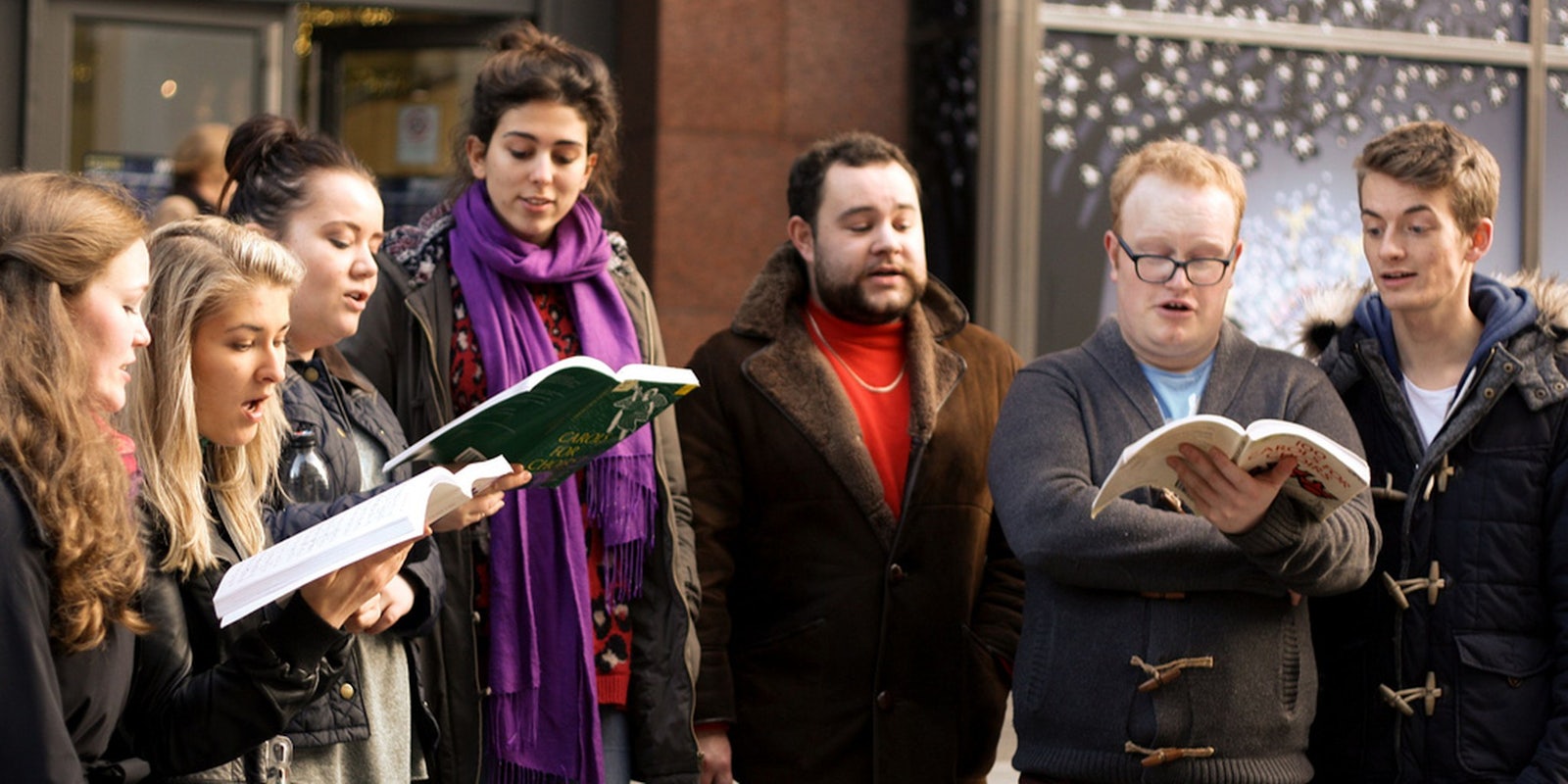Why did only “Silent Night” become a century-spanning Christmas hit while Franz Gruber’s other tunes, “Joyful Christmas” and “Holiest Night,” landed in the dustbin of history?
Walked into my local supermarket which I’ve never seen so quiet… and Silent Night is playing loud.. I totally got goosebumps!
— michelle keegan (@michkeegan) December 16, 2014
We all need healing. Our city needs healing. Join us at a silent march tomorrow at 5pm in Harlem. #SILENTNIGHT pic.twitter.com/4CEoas4Drg
— Linda Sarsour (@lsarsour) December 20, 2014
#christmasmeans singing ‘Silent Night’ at the nursing home, tearfully I ask ‘Any requests?’ Doris says ‘Can we have sausages for dinner?’
— Kate Bottley (@revkatebottley) December 23, 2014
“Silent Night” occupies a somewhat unique status as what anthropologists call a sacred or inalienable object—your grandmother’s wedding ring, the Constitution, or the family portrait we carry in our wallets—in other words, objects that carry special meaning for us. Sacred objects are created when an important event or sentiment (the founding of a nation, the birth of a child, or the hope for unification) is transferred onto a token, and thus that event’s meaning becomes moveable across time and space.
So what was the original message? In 1818, when the carol was created, most Christmas music was written with one single purpose in mind: to reinforce existing class distinctions. While Handel and Bach’s music served to sustain the power of King and Church, “Silent Night” conveyed the opposite message—hope for ordinary people. Gruber and his lyricist friend, Joseph Mohr, molded this message into musical form as a symbolic salve against a political order that had split their village up between Austria and Bavaria and forced it to secularize.
Soon “Silent Night” became inspirational to people who wanted to do good. From the German theologian Wichern, who created a specific version for Protestant audiences, and the Tyrolean folk-singers who performed the song across the West to American priest John Freeman Young who created his own rendition in 1859—now the most popular English language version of “Silent Night”—these and other guardians preserved “Silent Night’s” original theme and tailored it to specific historical conditions. Young, for instance, made “Silent Night” accessible as a symbolic salve for addressing some of the tensions that the young nation torn by Civil War was soon to endure.
Eventually, the carol’s theme of hope for ordinary people became accessible across time and space. Consider the well-known Christmas Truce of 1914. Five months into World War I, after hundreds of thousands of lives had already been lost, it wasn’t Pope Benedict XV’s passionate plea for a ceasefire at Christmas that convinced feuding camps to lower their weapons but the humanizing power of “Silent Night.” On Christmas Eve, trees and candles went up along parts of the German line and as darkness fell, the entrenched German, French, and British troops started singing “Silent Night” together, giving themselves and the song more hope.
But what happened to those who betrayed “Silent Night?” During Christmas Eve 1942, for instance, the Nazis staged a “Silent Night” sing-along featuring the German troops in Stalingrad during one of history’s first-ever live radio broadcasts. Perhaps aware of the carol’s humanizing powers, Romanian dictator Nicolae Ceausescu tried to erase the carol from his people’s memory altogether. But the carol survived him too. The dictator was tried and executed on Christmas Day in 1989.
These days, it may seem as though the carol has been successfully co-opted at last. But marketing mobilization of sacred objects has its limits. For instance, when U.K. supermarket chain Sainsbury’s recently recreated World War I’s magical “Silent Night” moment, it sparked a tidal wave of outrage and complaints. When co-opting a sacred object like “Silent Night,” cultural brand backlash is almost inevitable. And that’s because we guard the song like our grandmother’s wedding ring.
We know that music stimulates human emotions such as happiness and hope. But when it comes to understanding why some songs have lasted while others have disappeared, we also need to remember that music and people need each other. “Silent Night,” like no other carol, conquered the world not only because it gave us a message of hope, but also because we carried it forward. To break down the barriers that stand between us, it’s not enough to know about the song. We must, in fact, sing it. So this holiday season, let us all sing “Silent Night” together—as off-key as we may be.
This post originally appeared on Indispensables and has been reprinted with permission.
Photo via Tom Brogan/Flickr (CC BY-ND 2.0)


